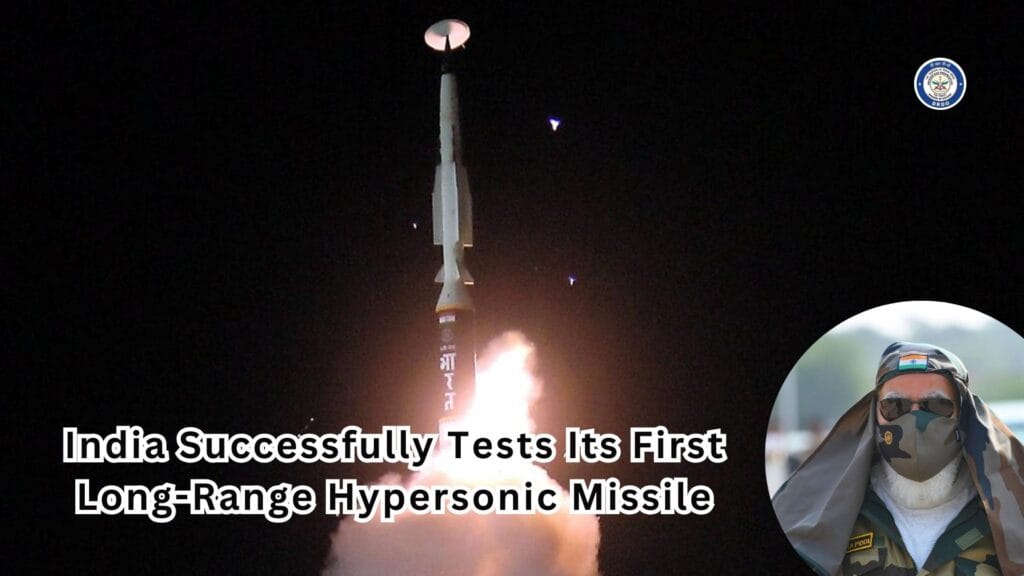What Are Hypersonic Missiles?
Before going into the news, let’s understand what hypersonic missiles are and why they have raised so much buzz around the globe.

Hypersonic weapons that reach speeds at Mach 5 or greater, meaning five times the speed of sound. At the minimum, that would amount to 6,125 km/h, but for some, they move at more than 24,140 km/h, or Mach 20. That makes them nearly impossible to detect and intercept with the systems the U.S. currently has.
There are two main types of hypersonic missiles:
- Hypersonic Glide Vehicles (HGVs): Launched by a rocket, these will glide all the way to their targets at hypersonic speed. They often maneuver along the trajectory just to avoid being intercepted.
- Hypersonic Cruise Missiles: Scramjet engines enable these to cruise at such high speeds throughout the entire duration of their flight at low altitudes.
Their advanced speed and maneuverability besides a vast range make them a game changer in today’s modern warfare. They are capable enough to carry nuclear or conventional warheads, and they are very hard to intercept. Thus, these become very crucial assets for national defense.
The @DRDO_India has successfully conducted a flight trial of its long range hypersonic missile on 16th Nov 2024 from Dr APJ Abdul Kalam Island, off-the-coast of Odisha.
Raksha Mantri Shri @rajnathsingh has congratulated DRDO, Armed Forces and the Industry for successful flight… pic.twitter.com/wq7yM2YS9f
— रक्षा मंत्री कार्यालय/ RMO India (@DefenceMinIndia) November 17, 2024India Successfully Tests Its First Long-Range Hypersonic Missile
The big news is that India has entered the elite club of nations capable of developing and deploying hypersonic missiles. This is a historic milestone in India’s defense capabilities and a proud moment for the nation.
The Defence Research and Development Organisation (DRDO) recently achieved success in the flight trial of a long-range hypersonic missile, capable of carrying various payloads over a range of 1,500 km. On Saturday night, the organization made history by doing what few other countries have ever achieved launching a hypersonic missile. With this success, India has joined the elite group of countries having this cutting-edge technology including the United States, Russia, and China.
Indian Defence Minister Rajnath Singh made the announcement, and it was hailed as a “historic moment” for India. This would greatly strengthen the country’s military preparedness and technological prowess, he said.
India has achieved a major milestone by successfully conducting flight trial of long range hypersonic missile from Dr APJ Abdul Kalam Island, off-the-coast of Odisha. This is a historic moment and this significant achievement has put our country in the group of select nations… pic.twitter.com/jZzdTwIF6w
— Rajnath Singh (@rajnathsingh) November 17, 2024The test of the missile was across multiple systems and domains. According to DRDO, data from down-range ships confirmed that the missile executed terminal maneuvers with very high precision and hit its target effectively.
What’s more astonishing is that the missile is fully indigenous, by the Dr. APJ Abdul Kalam Missile Complex in Hyderabad in collaboration with other DRDO labs and industry partners.
How Does India Compare Internationally?
India has joined the hypersonic missile club, but how does it fare against the big boys, China, Russia, and the United States?
- China: China has developed hypersonic technology aggressively and has already operational systems, such as the DF-ZF hypersonic glide vehicle, which reportedly could carry conventional or nuclear warheads. It is said to be one of the most maneuverable vehicles, with long ranges, and challenging global defense systems.
- Russia: The Avangard hypersonic glide vehicle is already a game-changer, supposedly flying faster than Mach 20. Russia has already fielded it as part of its strategic forces. Russia also claims to have operational hypersonic cruise missiles such as the Kinzhal and Zircon.
- United States: The U.S. has several hypersonic systems in test, including the AGM-183A ARRW(Air-Launched Rapid Response Weapon) and other variants, but at much lower maturity levels than either Russia or China, with operational deployments. India is giving emphasis to precision and advanced countermeasure technologies.
- India: India is still at a very beginning stage compared to the above three countries but 1,500 km range hypersonic missile development was quite a good beginning. Now India needs to scale up production, improve their ranges and speeds, and integrate into the armed forces.
ALSO READ | China Set to Unveil New J-35A Stealth Fighter Jet in Push to Rival US Air Power
My Take: A Boost for India’s Defense, But There’s More to Do
This surely is a giant leap for India. It highlights the capabilities of Indian scientists, and the technological skills of the country are gradually gaining momentum. However, I think that the present government should encourage privatization to bring out the full potential of India in the defense and space sectors.
Such private companies, which manufacture defense equipment but work under government regulation, significantly characterize the country in the United States, France, and even Russia. Therefore, such a system generates rapid innovation, cost efficiency, and excellent competition results.
Take, for instance, the case of U.S. Companies like Lockheed Martin, Boeing, and SpaceX are stalwarts in revolutionizing aerospace and defense technology. If India, especially the Modi government, smoothes out bureaucratic hurdles and invites private companies to enter these crucial sectors it can hasten its growth in both defense and space.
I think the push for privatization could help India achieve much more. With fewer hurdles and more funds, along with better collaboration between government and private players, the defense sector in India can advance at high speed—the high-speed era, of course.
What’s Next for India?
- Scaling production of hypersonic missiles.
- Collaborating with private companies for faster R&D.
- Developing advanced counter-hypersonic systems.
- Boosting space and aerospace technologies to complement defense advancements.
Your Thoughts?
This is a monumental step for India, but what do you think? Should the Indian government push for more privatization in the defense sector? Or do you believe the current setup works fine? Let us know your opinions in the comments below!
Analysis by Atul Raj






